The rowza ceremonies held by the Leader of the Revolution for Imam Hussain (a.s.) publicly take place at the Hussayniyah of Imam Khomeini (r.a.). The Hussayniyah of Imam Khomeini is a rectangular roofed space, approximately 61 meters long and 30 meres wide. The interior is very simple with 14 pillars. Since 1989 and the start of the leadership of Ayatollah Khamenei, His Eminence has delivered his public speeches there.
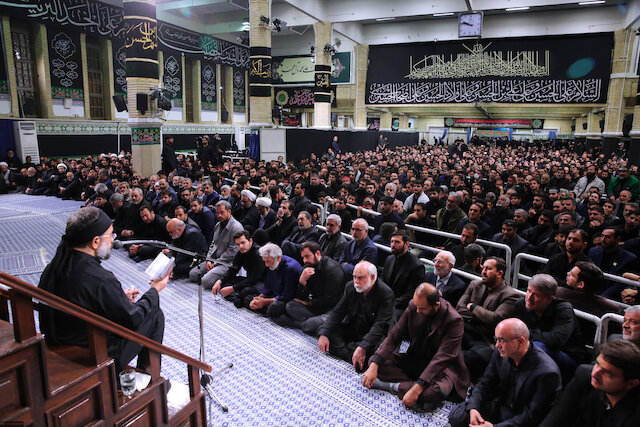
There are two main ways in which the Hussayniyah looks different during Muharram ceremonies compared to the rest of the year. First, during Muharram, the Hussayniyah is adorned with black or green flags and banners on which there are phrases about the Prophet and his progeny beautifully written.
Second, during these ceremonies Ayatollah Khamenei does not deliver any speech; rather His Eminence sits on the right side in a corner of the Hussayniyah, while orators and panegyrists deliver speeches and recite eulogies and monodies. Above the place where Ayatollah Khamenei sits, a peace of green banner can be seen on which, in a beautiful writing, Imam Hussain (a.s.), his family and companions are greeted and praised.
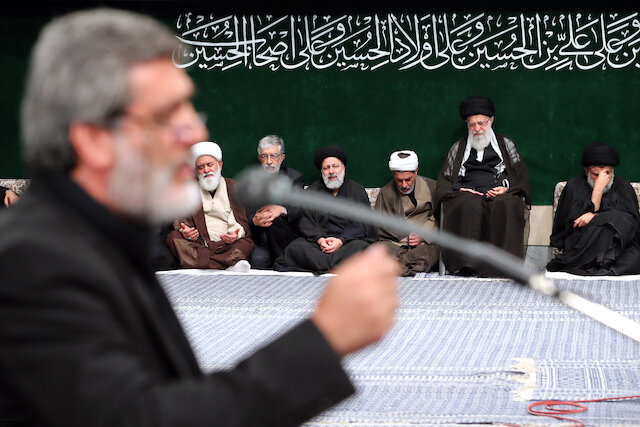
Every year, these ceremonies often coincide with important political and international events. Unannounced attendance by special guests, or particular speeches or recitations every year during these ceremonies have been influential even at international levels.
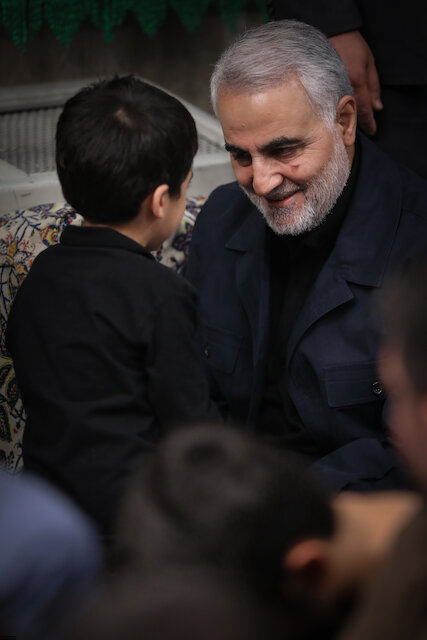
For example, this year a monody by Mahmood Karimi, a famous Iranian panegyrist, about the certainty of the obliteration of Israel, or another poem by Meysam Moti’ee, the youngest panegyrist invited, about the symbolic dagger of Yemen’s Ansar-Allah, were among the events of these nights, that gained extensive news coverage.
Another powerful event during these nights, was the attendance of Mr. Muqtada Sadr, a famous Iraqi figure, beside Imam Khamenei at the ceremony of the night of 10th of Muharram, which caused a great stir in American and Saudi media.
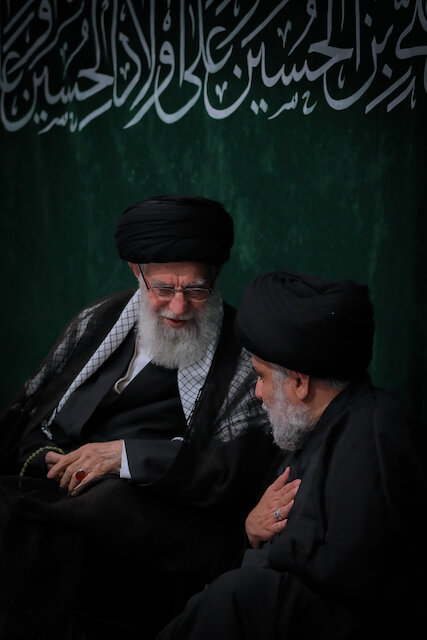
The spirit of the mourning congregation at the Hussayniyah is also impressive. Apart from those from Tehran, groups of people from different cities near and far travel miles to participate in these ceremonies.
Usually, hundreds of people sit inside the Hussayniyah, and thousands more fill the outside spaces and the surrounding streets to benefit from the ceremony.
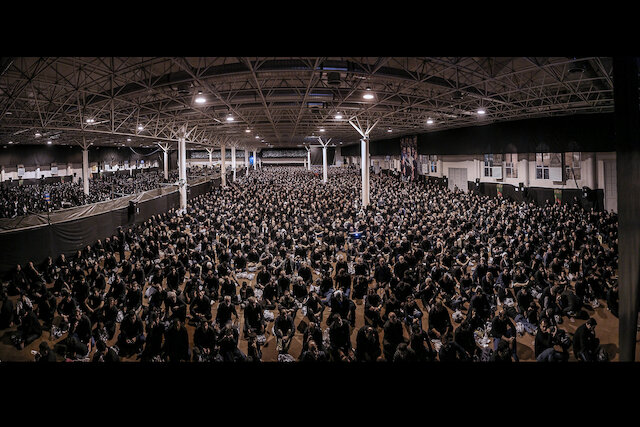
During the ceremony, the paradox of fascination and excitation simultaneously evoked with sadness and mournfulness of the congregation mourning for Imam Hussain (a.s.), especially among the youth is among the interesting features of the event, and understanding this paradox is tantamount to understanding the secrets of the mourning for Imam Hussain (a.s.). If you ask almost any mourner whether crying for Imam Hussain (a.s.) makes him/her depressed and saddened, they will respond that it is the other way around: by crying for Imam Hussain (a.s.), an increased energy and enthusiasm wells up in them. This feeling is not only for Iranians; I have heard the same during Arbaeen walk from many people of various nationalities including Iraqis, Pakistanis, Indians, Bahrainis, and even Europeans.
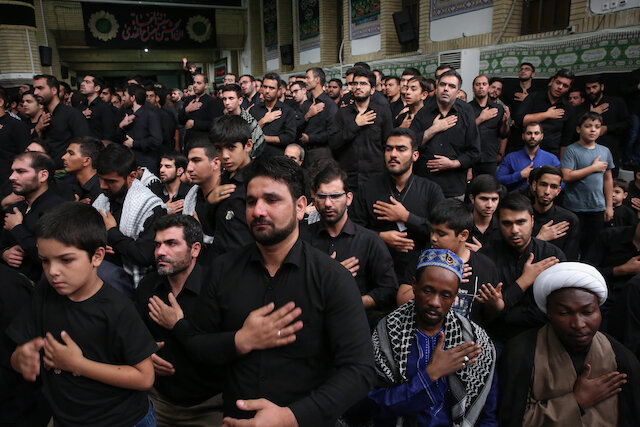
The disabled veterans of the 1980-1988 war waged by Saddam against Iran, and the disabled war veterans of the war against the ISIS have a reserved place in the Hussayniyah, and are accommodated at the front rows of the ceremony. A young disabled war veteran who had been severely injured in the past year or two, and was now on a wheelchair, said that the weapons confiscated from ISIS were usually modern U.S. weapons.
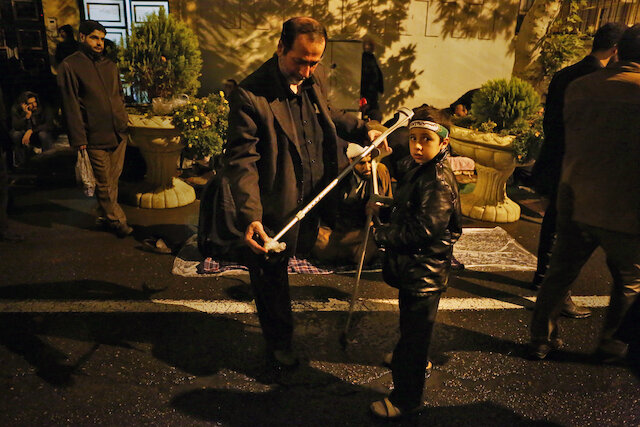
At the end of the ceremony, the mourners dine with the Leader of the Revolution, as is usually the tradition in mourning ceremonies for Imam Hussain (a.s.) where food is given out to the mourners.
The 72-man uprising of Imam Hussain (a.s.) and his companions against the corrupt and oppressive rule of Yazid and his several tens of thousands strong army can be considered as the most astonishing uprising in history, that as time goes by, instead of being forgotten and fading away, interests the minds and lives of increasingly more people all around the world. The secrets and mysteries of this reformative movement has inspired curiosity in many people with different religious beliefs to discover it.
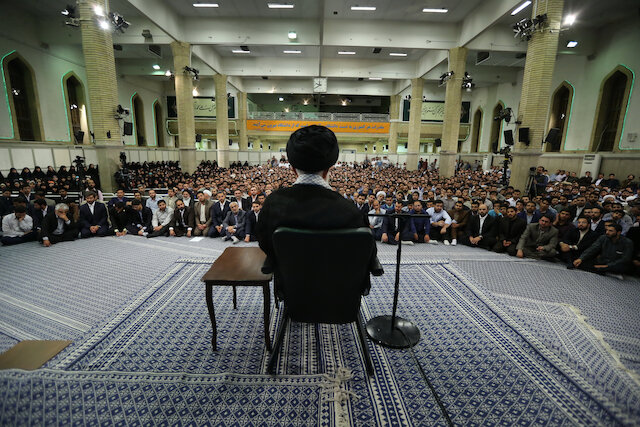

Comment